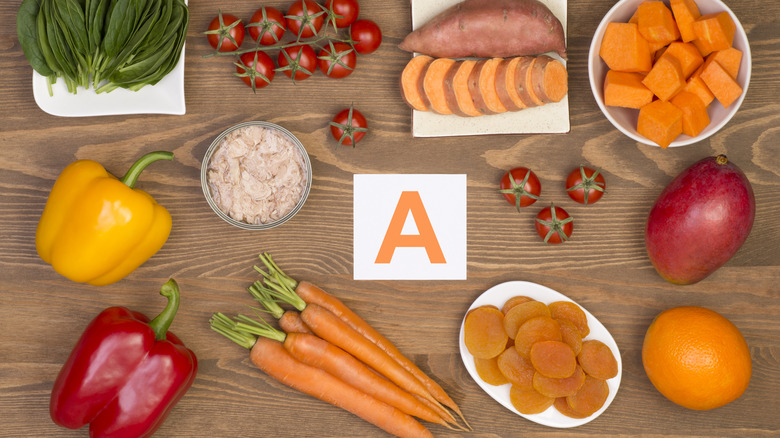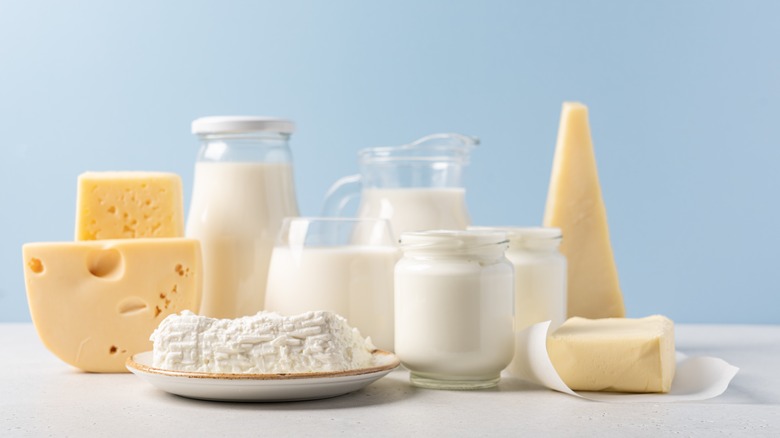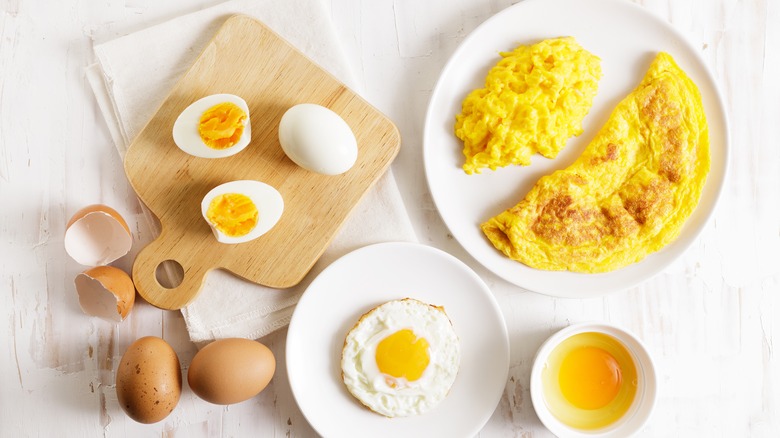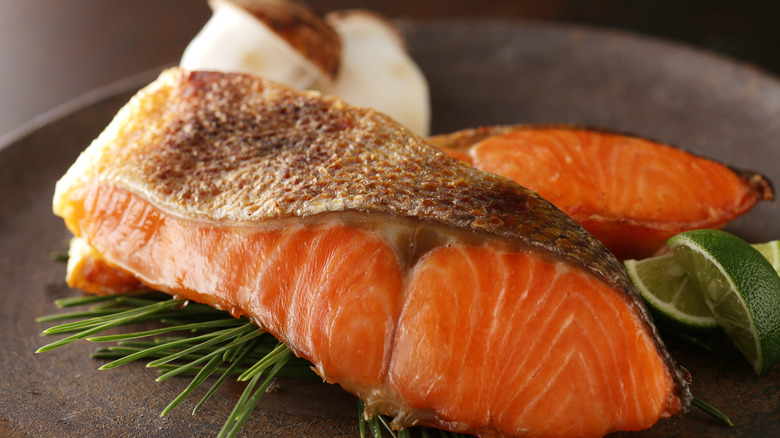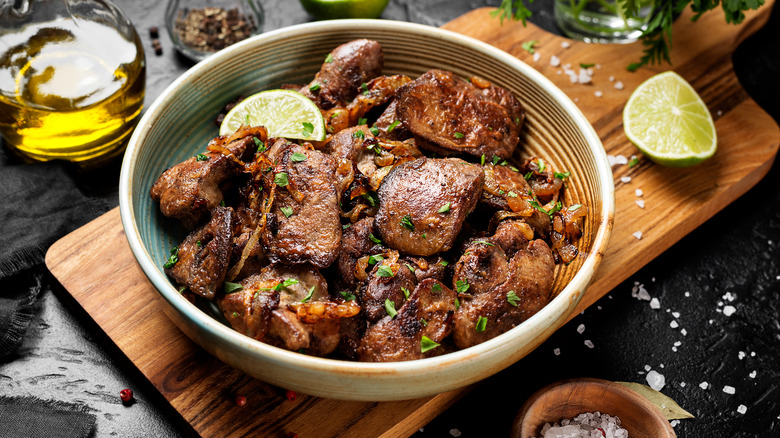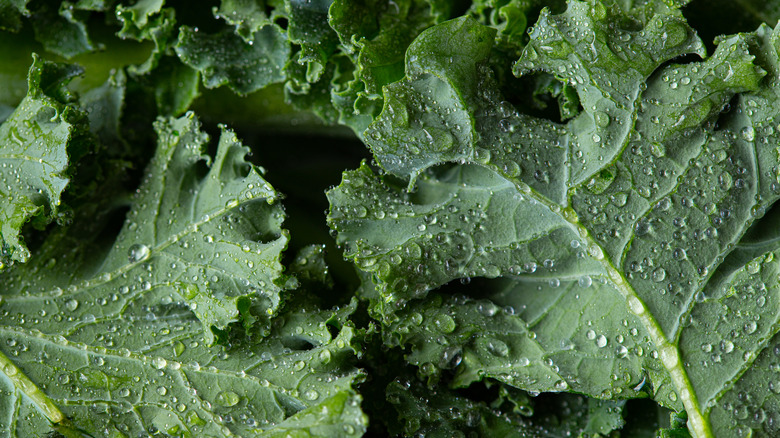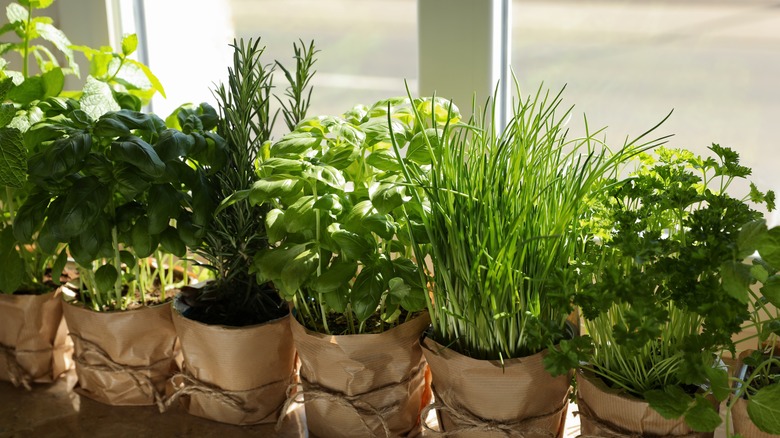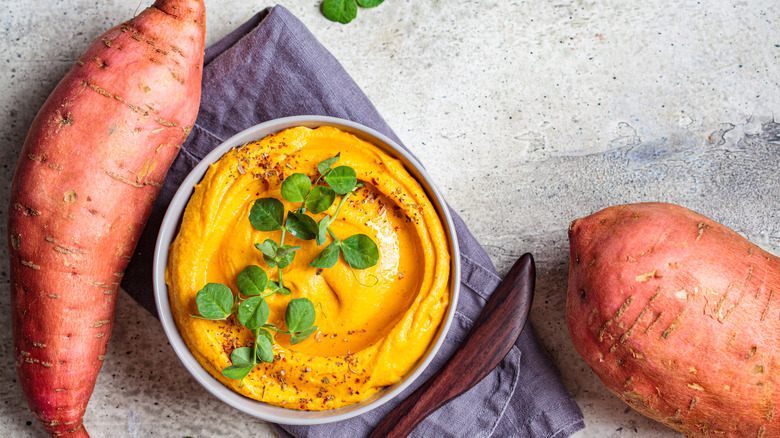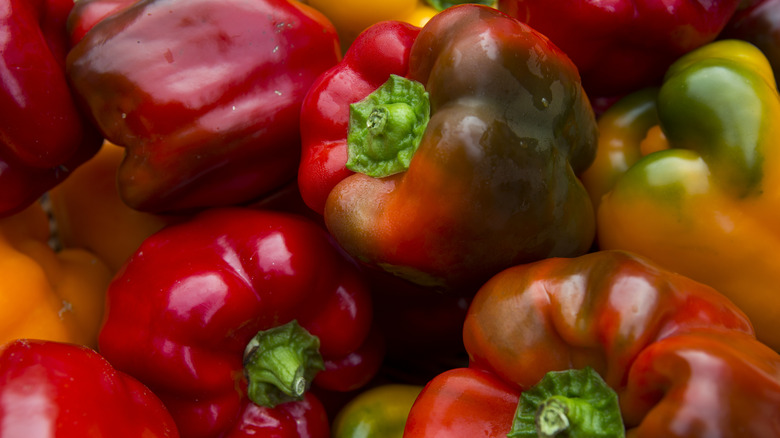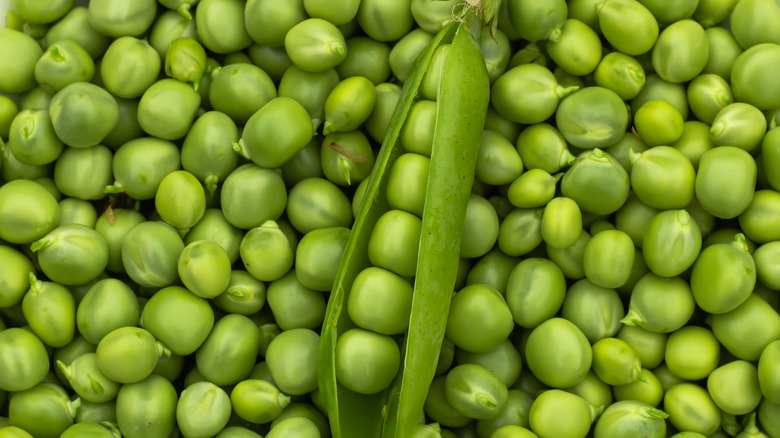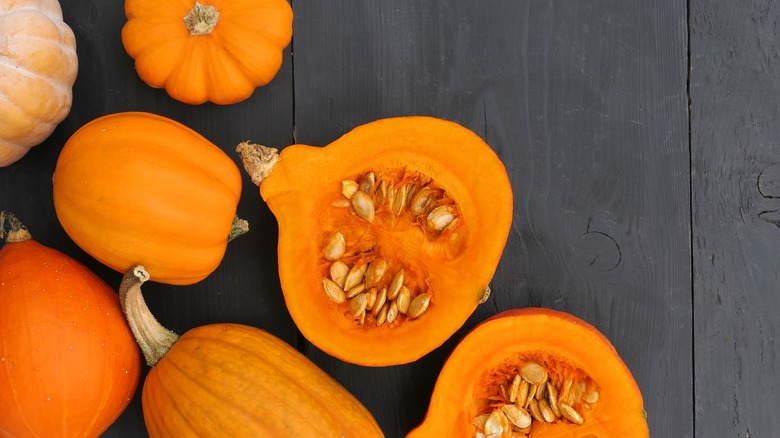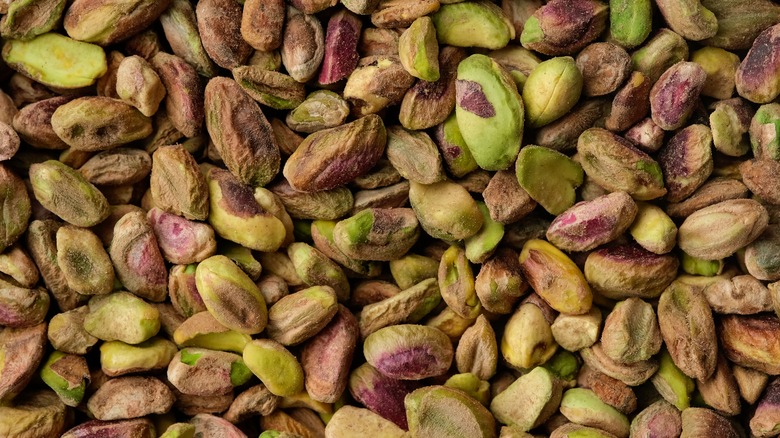13 Foods That Will Give You More Than Enough Vitamin A
Vitamin A assists many essential body functions, such as our immune system, skin cell regeneration, and maintaining our vision. According to the Harvard School of Public Health, the average adult needs between 2,333 international units (700 micrograms) and 3,000 international units (900 micrograms) a day, an achievable target, as many foods provide that amount per serving. There are two ways that the body receives vitamin A: preformed vitamin A (from animal products) and provitamin A carotenoids (from plants). A 1992 article published in the Archives of Biochemistry and Biophysics states that the body converts beta-carotene from plants into usable vitamin A and regulates the amount converted. Vitamin A is a fat-soluble vitamin stored in our livers and other fatty tissues. Because the body doesn't flush out excess amounts of the vitamin, a 2006 study published in the American Journal of Clinical Nutrition found that vitamin A toxicity is possible. However, this is primarily an issue with preformed vitamin A.
According to a 2020 article published in The Journal of Nutrition, you may see vitamin A show up on some food labels as vitamin A RAE, which stands for retinol activity equivalents. However, this article uses the more traditional labeling of international units (IU), and reports quantities of vitamin A found in raw foods. While cooking improves our ability to digest nutrients, it also decreases their availability (per Healthline). Even so, whether you are eating cooked or raw foods, there are plenty of options that will give you more than enough vitamin A.
1. Dairy
If you're a fan of dairy looking to increase your vitamin A intake, you're in luck. Butter, many kinds of cheese, milk, and yogurt contain loads of vitamin A. For example, one pat of butter has 125 IU of the vitamin. Similarly, a 1-ounce slice of sharp cheddar cheese supplies 278 IU. Bleu cheese enthusiasts will be pleased to know that 1 ounce of Roquefort cheese provides nearly 300 IU of vitamin A, which is about the same amount as one serving of vanilla ice cream, good news for those with a sweet tooth.
If you're looking for something a little lower in calories, 100 grams of plain, low-fat Greek yogurt is a good choice as it contains 309 IU of vitamin A. One cup of 1% unfortified cow's milk isn't as nutrient-dense, but it still provides 115 IU.
Looking for some ways to cook with all this dairy? Some of the best cheese recipes include buffalo bleu cheese dip and cheese and macaroni pie. If you're more of a cheese-platter type of eater, remember that there are cheeses from all around the world to try.
2. Eggs
One large chicken egg has 270 IU of vitamin A, and many are fortified with more. If they are fortified, that information should be on the packaging. Unlike many other animal products, eggs also contain beta-carotene. According to a 2019 article in the Selcuk Journal of Agriculture and Food Sciences, that is because of the foods that birds eat. Wild bird eggs have higher amounts of beta carotene because they have access to more nutrient-dense diets than farmed and factory-raised hens.
Eggs are incredibly versatile, appearing in many recipes as a binder, thickener, or volumizer. Sometimes they are the star of the show. And with 101 ways to cook an egg, you will never be bored. Try a hearty apple chicken breakfast skillet if you are craving fall flavors. For those looking for a vegetarian breakfast, spicy and tomatoey shakshuka is sure to please. Or, simply fry one sunny side up.
3. Oily fish
Oily fish is another excellent source of vitamin A, but some sources are more vitamin-packed than others. Raw bluefin tuna, for example, has 2,180 IU of vitamin A per 100 grams. In contrast, the same amount of raw, farmed Atlantic salmon has 193. Rainbow trout and clams are slightly higher, each containing around 300 IU of vitamin A in every 100 grams.
Considering the average person only needs between 2,333 and 3,000 IU of vitamin A a day, seafood choices with lower amounts are still great options. These are also better options if you are worried about the sustainability of your fish because Seafood Watch says it is best to avoid purchasing bluefin tuna. They are endangered due to overfishing. Trout and salmon are more readily accessible with more sustainable varieties available. Plus, there are plenty of simple, spectacular salmon recipes to keep you full of vitamin A.
4. Liver
Liver is a vitamin A powerhouse. Just 100 grams of beef liver contains 16,900 IU of the stuff, and chicken liver has 11,100. But lamb liver and pork liverwurst are the true champions of the vitamin A game, with 24,600 and 27,700 IU, respectively. While liver is rich in many nutrients, it's important to note that it is high in cholesterol and because it contains such high amounts of vitamin A, if overeaten, it could lead to vitamin A toxicity. It's best to consult a doctor before adding large amounts of this vitamin into your diet. There are other concerns about eating liver, specifically goose or duck liver, due to the inhumane treatment of the animals in foie gras farms. While goose liver isn't exceptionally high in vitamin A compared to other animals (31,000 IU/100 grams), it is prized as a delicacy.
Interestingly, the world's first lab-grown foie gras could solve this major concern. The meat is expected to hit the market this year. In the meantime, if you're looking for something nutritious but slightly less controversial, why not try this recipe for chicken liver pâté with dill-pickled green beans? And, if eating liver isn't your cup of tea, you can always take a dose of cod liver oil, which packs in 13,600 IU of vitamin A per tablespoon.
5. Leafy greens
The vitamin A provided by animal products and by plants is different; the body converts beta-carotene from the latter into vitamin A. And since your system regulates this conversion process, it's harder to overdo it on plant vitamin A. With the amount of vitamin A they provide, you might consider leafy greens the liver of the plant world. In the case of everyday greens, spinach is your best bet, with 9,380 IU of vitamin A per 100 grams, followed by romaine lettuce's 8,710. Kale and collards also pack a punch with 4,810 and 5,020 IU per 100 grams each. However, if you can get your hands on some turnip greens, they're the true prize, with 11,600 IU of vitamin A per 100 grams. Dandelion, beet, and chicory greens aren't far behind, with 10,200, 6,330, and 5,720 IU.
If you're having trouble getting those leafy greens down, try this trick to help you make the best kale salad. Soak your greens in warm water for 10 to 15 minutes before adding them to the salad to remove any bitterness.
6. Herbs
Green herbs are a great way to add flavor to any dish. They're also a great way to add a dose of vitamin A. Just 2 tablespoons of chopped fresh basil provides you with 280 IU of vitamin A, so why not add some lemon basil pesto to your pasta the next time you make it? It only takes 1 tablespoon of parsley to get 320 IU of vitamin A, which you can easily achieve via this delicious simple chimichurri recipe. You can even replace that parsley with cilantro; a ¼ cup of the green stuff has 270 IU of vitamin A.
And, be sure to top off your next cocktail or lemonade with some fresh peppermint — 2 tablespoons have 136 IU of vitamin A. Don't worry if you only have access to dried herbs; they can still provide you with a pinch of vitamin A. One teaspoon of ground sage, for example, contains 41 IU.
7. Root vegetables
Sweet potatoes and carrots are two vegetables that are packed with vitamin A. These root vegetables are sweet treats filled with beta carotene that your body converts into vitamin A it can use. A large carrot has 1,200 IU of vitamin A, and one 5-inch sweet potato has 18,500 IU of vitamin A — woah. Beta-carotene is responsible for these veggies' orange color. In fact, according to the Cleveland Clinic, if you eat too much beta carotene, you can develop a condition called carotenemia and turn orange, too. Don't worry too much because not only is this condition not dangerous, but it's also rare. As Dr. Piliang of the Clinic states, "if you're eating 10 carrots a day for a few weeks you could develop it."
So, go ahead and enjoy your orange root vegetables. And there are many ways to eat these nutritious treats, but sweet potatoes are incredibly delicious baked. You can bake them whole or roast them in cubes. Either way, you're sure to have a tasty meal, side dish, or snack on your hands.
8. Red vegetables
If your vegetable is red — and technically a fruit — chances are it's carrying a hefty load of vitamin A. One standard medium red tomato has 1,020 IU of it, and a 15-ounce can of tomatoes has 3,400. Of course, tomatoes come in many varieties, each with its own best use. Use plum tomatoes in your cooking, slice beefsteaks in your sandwiches, and pop cherry tomatoes into your salads (or your mouth).
Tomatoes aren't the only red fruit-vegetable. Their cousin, the pepper, will also provide you with your vitamin A needs. Just one medium sweet red pepper has 3720 IU — more than the average person's daily recommended amount. Due to its smaller size, a red chili pepper will provide you with a bit less vitamin A (428 IU), but that's still nothing to sneeze at. Even a ¼-teaspoon serving of Tabasco hot sauce contains 20 IU of vitamin A.
While the green and immature versions of these vegetables are nutritious in their own right, they do not contain sufficient beta-carotene to be good sources of vitamin A.
9. Peas
Peas are excellent sources of vitamin A. One cup of raw, podded peas has 687 IU of vitamin A, and just 10 pea pods have 371. Comparatively, 1 cup of split sprouted peas has 292 IU of vitamin A. While that is undoubtedly still awesome, it is indicative that dry peas are not superior to wet. Your peas don't have to be fresh, though; 1 cup of canned peas has 1,670 IU of vitamin A.
These seeds are a very versatile food. You can use them with mint in a salad or pair them with basil in pasta. You can even make pea hummus! Of course, they can also be a classic side-dish to practically any dinner. If you want to get really creative, add some to your cocktails, such as this spring pea mojito. The combination of peas and mint will have you meeting your recommended daily dose of vitamin A in no time.
10. Squash
Because the orange-food-creating beta-carotene is the key to plant-based vitamin A, it is not surprising that if you want to use squash to up your vitamin A intake, you need to pick orange ones, like kabocha, of which 85 grams contains 3,850 IU of vitamin A.
Butternut squash provides 10,600 IU of the vitamin per 100 grams, while the same amount of hubbard squash packs in 1,370. If you are more into pumpkins, great news! 100 grams of the squash has 8,510 IU of vitamin A, and even a single one of its blossoms will give you a respectable 39. But it is not just the fruit and the flower that can provide you with your vitamin A needs. One cup of fresh pumpkin leaves contains close to 800 IU of it. If you have never had a pumpkin leaf, consider making bora, which are Bengali pumpkin-leaf fritters. If you're looking for more of a traditional way to use the squash, try these pumpkin cookies packed with walnuts and raisins.
11. Yellow fruit
It is not just savory foods that contain vitamin A. Some of nature's candy — fruit — come naturally packed with the vitamin. If you want to grab one fruit and go, you'll get the most bang for your buck with a mango (3,630 IU). Perhaps you'd like to drink your vitamins. If that is the case, mix mangoes and yogurt (another vitamin A powerhouse) into a mango lassi recipe. Maybe that's not sweet enough — no worries, 100 grams of dried, sweetened mango still contain 1,340 IU of vitamin A. If you are still feeling the tropical fruit vibe, one small papaya will provide you with 1,490 IU.
You can get 3,380 IU by eating 100 grams of cantaloupe, and one fresh apricot is mighty, considering its size, coming in with 676 IU. One cup of dried apricots provides 4,680 IU of vitamin A. If you're uncertain how to use up big fruits like cantaloupe, check out these chefs' best tips on how to use melons!
12. Pistachios
Not all nuts and seeds are packed with vitamin A, but pistachios are. A 1-oz serving of this seed (about 50 kernels) contains 146 IU of vitamin A. Pistachios are also a great source of protein, potassium, fiber, and some antioxidants. They are also high-fat, so if you are concerned about that, opt for another source of vitamin A.
Pistachios are a popular snack just by themselves, either roasted or raw, but they are wonderful to add to recipes as well. Remember: If you buy pistachios shell-on, get ready for a finger workout. For a double boost of vitamin A-power, consider making a pistachio, guanciale, and chicken liver stuffing recipe. It works great for the holidays or any time of year. To satisfy your sweet tooth, consider a pistachio ice cream recipe that combines pistachio, milk, and eggs. Even a small serving of this frozen treat will contain ample vitamin A.
13. Fortified foods
Fortified foods have added nutrients and are a great way to ensure you get enough vitamin A in your diet. They can be handy for children or picky eaters. When purchasing fortified foods, evaluate how much vitamin A is already in your diet and track how much you add in. It is possible to consume too much, and vitamin A toxicity is rising.
For reference, some commonly fortified foods are milks — both animal and plant — and cereals. One cup of 1% cow's milk, sweetened coconut milk, and one serving of almond milk all have just under 500 IU of vitamin A. One cup of Cheerios comes in at 924. So, if you have a bowl of Cheerios and fortified milk for breakfast, you've likely already consumed about half of your daily vitamin A requirement. With that in mind, you should consult a doctor or nutritionist before adding large sources of supplements or fortified foods into your diet.
